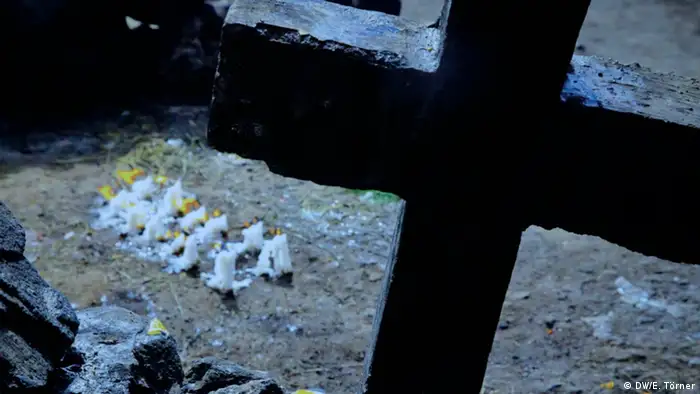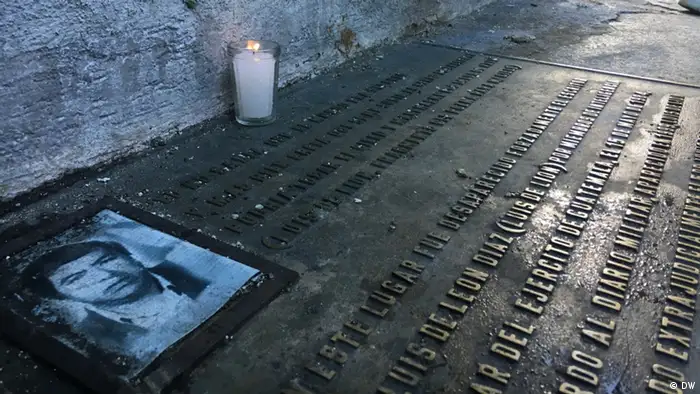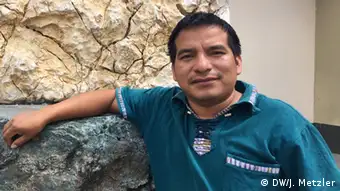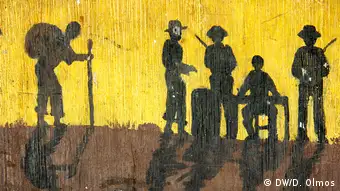Latin America
Guatemala: Breaking the silence about the past
Guatemalans traumatized by the country's bloody civil war continue to suffer but few are listening. A project is aiming to change that with the help of journalists and activists.
Reflecting on the past is an agonizing process for Mayarí de León, whose father was kidnapped by Guatemalan security forces in 1984. She hasn't had seen a sign of him since.
Although the state has officially apologized for the abuses it committed in the 36-year conflict, the memory of the estimated 200,000 men, women and children murdered and massacred during the civil war is surrounded by a culture of silence - both by officials as well as the general public.
This has to change says de León, a human rights activist. "If our wounds are to heal, we have to start talking about our pain."
Left alone to grieve
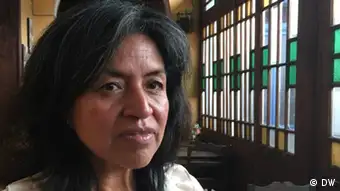
Human rights activist Mayarí de León, whose father was kidnapped during the civil war, wants to turn grief into hope
The scars of the brutal conflict between guerilla groups and state forces run deep. Most of the victims were civilians, primarily indigenous Mayans living in rural areas.
Mayarí de León is involved in a project aiming to promote a dialogue about the past.
"If we're to have hope for the future, we need to deal with the horrors of the past," says de León.
This requires a new culture of remembrance and also access to information about the conflict, which started in 1960 and ended with the signing of peace accords in 1996.
This raises the question of how to give victims a voice and how to break the decades-long silence.
David Olmos, DW Akademie country manager for Guatemala, is convinced that local journalists and human rights activists can play a special role in this. "They can act as a window on the past for the survivors," he says.
To do this, local journalists and human rights activists needed to be sensitized to the issue.
The past packed in boxes
In November, DW Akademie conducted a workshop in Guatemala City focusing on the past. As part of the workshop, participating journalists visited the Historic Archive of the National Police in Guatemala (Archivo Histórico de la Policía Nacional en Guatemala).
Few Guatemalan journalists have ever been to the archives, which contain endless rows of cardboard boxes filled with files detailing random arrests, ruthless kidnappings and cold-blooded murders.
Cobo de Léon, who works at the TV channel Cablevisión Dulce María in the town of Nebaj, was deeply moved by the visit and now wants to share his experience. "I'd like to produce a regular TV program so that youths can learn about the crimes committed," he said.
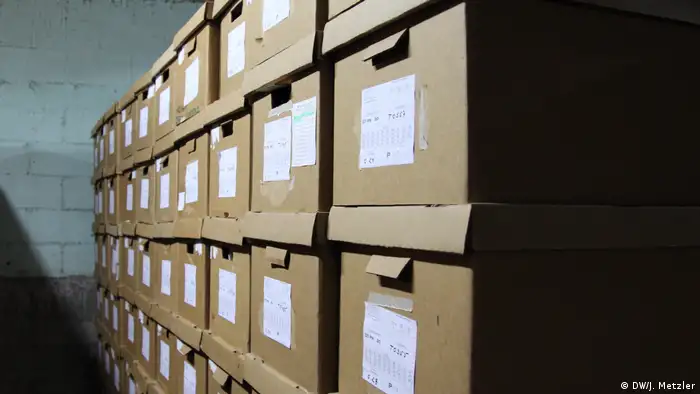
Historic Archive of the National Police in Guatemala, where the horrors of the past are packed in cardboard boxes
Map of remembrance
This report will become part of the "Map of Remembrance" - a joint three-year project, which commenced in 2015, together with the Guatemalan organization Memorial para la Concordia.
The aim of the project is to create an interactive website showing locations commemorating victims, such as murals, sculptures, gravestones and crosses. The map will also attempt to match the memorial sites with information about the fates of individuals involved, so that these silenced voices can be heard by future generations.
This is being done with interviews, tweets, pictures, Facebook posts and reports. DW Akademie local trainer Lucía Escobar says dealing with the past is central to the country's democratic development.
"History is always part of the present because many of our country's current problems are rooted in the civil war," Escobar says. "Journalists have to understand the past in order to explain the present."
Inspired by how Germany deals with the past
Germany's experience in coming to grips with the Holocaust and its Nazi past, and more recently the crimes of the East German communist government (GBR), can assist other countries going through a similar process.
To help this knowledge exchange, two Guatemalan delegations have already traveled to the German capital, Berlin, together with Colombian counterparts. They know the way a country deals with its past also shapes its future.
At the historical site in Berlin, journalists, university instructors, political scientists and activists exchanged experiences and discussed correlations, differences and successful approaches to coping with the past.

Journalists and human rights activists from Guatemala and Colombia visit the remnants of the Berlin Wall, one of the memorial sites in the German capital
The groups visited memorial sites together, including the Sachsenhausen concentration camp, the Berlin Wall and the archives of East Germany's infamous state security police, the Stasi.
"Guatemalans, Colombians and Germans are developing ideas together on how cultures of remembrance can succeed," says Olmos. "I see this as the best way to emerge from dark histories like these."
DW recommends
- Date 14.12.2016
- Author Richard A. Fuchs
- Feedback: Send us your feedback.
- Print Print this page
- Permalink https://p.dw.com/p/2UGeb
- Date 14.12.2016
- Author Richard A. Fuchs
- Send us your feedback.
- Print Print this page
- Permalink https://p.dw.com/p/2UGeb

